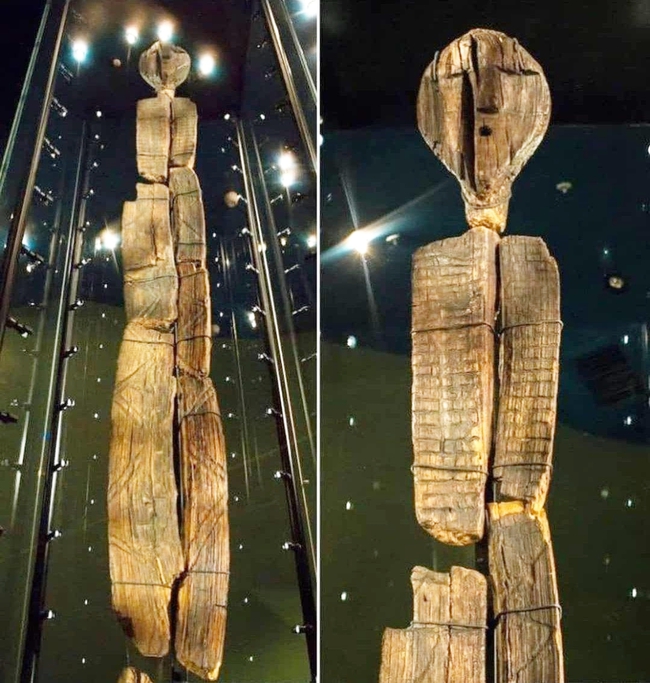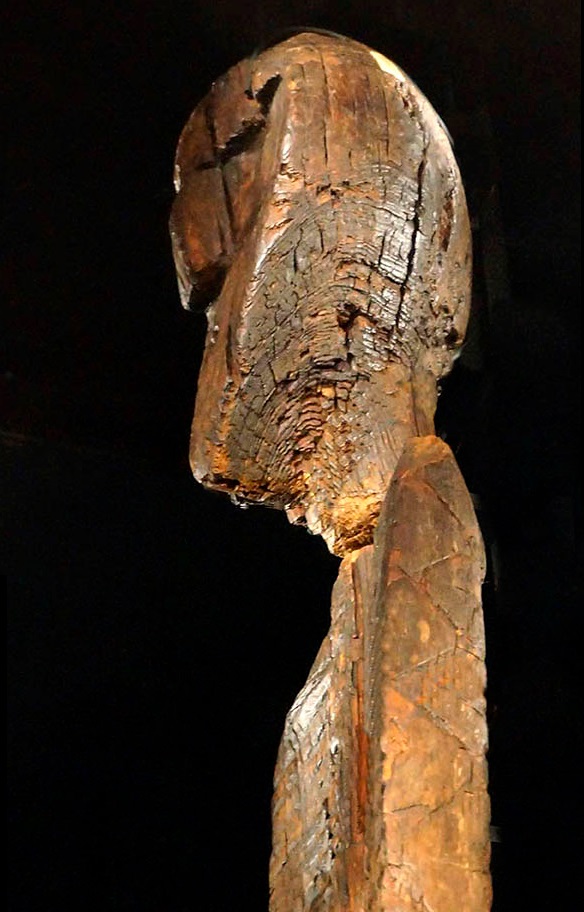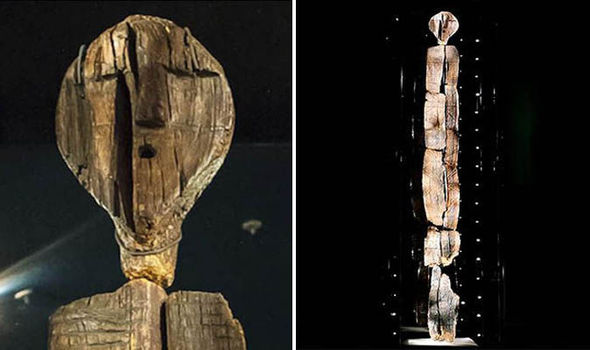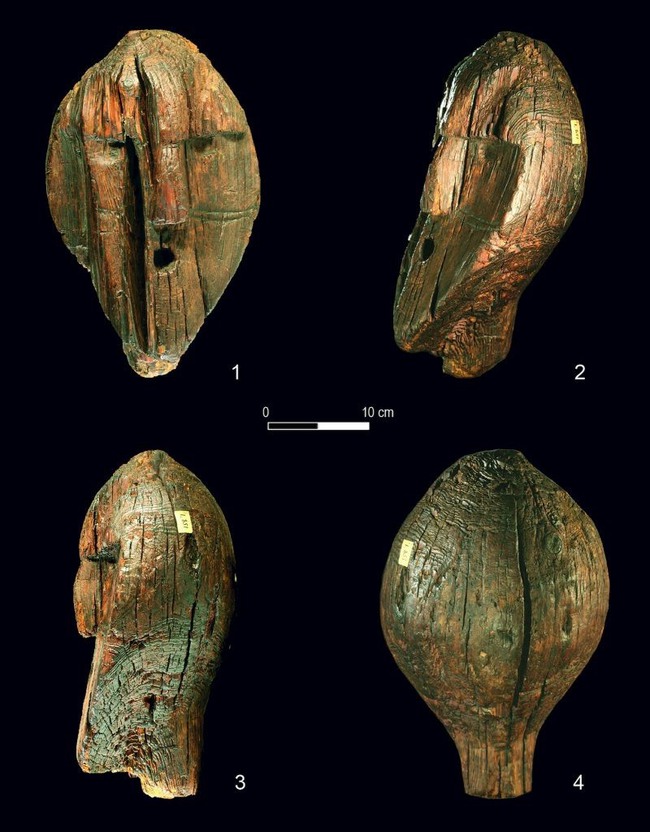Deep within the Ural Mountains of Russia, a remarkable archaeological treasure lies waiting to be explored. The Shigir Idol, a monumental wooden sculpture, stands as a testament to the ingenuity and artistic prowess of our ancient ancestors. At an astounding 11,500 years old, this enigmatic artifact is the oldest known wooden sculpture in the world, predating even the pyramids of Egypt by thousands of years.
Discovered in 1890 by gold miners in the Shigir peat bog, the Shigir Idol has captivated the imaginations of scholars, historians, and the public alike. Towering at over 5 meters (16 feet) tall in its original form, this colossal work of art is a stunning reminder of the remarkable achievements of our prehistoric forebears. Its intricate carvings and mysterious symbols have sparked countless debates and theories about the beliefs, customs, and lifeways of the people who created it.
In this comprehensive blog post, we will delve into the captivating history, cultural significance, and ongoing research surrounding this remarkable archaeological treasure. Join us as we unravel the mysteries of the Shigir Idol and gain a deeper understanding of our shared human past.
The Discovery of the Shigir Idol

The Shigir Idol’s journey to the public eye began in the late 19th century, when a group of gold miners were working in the Shigir peat bog, located in the Sverdlovsk region of the Ural Mountains in Russia. During their excavations, the miners stumbled upon a remarkable discovery – a towering wooden sculpture, buried deep within the peat.
The sculpture, which would later be known as the Shigir Idol, was immediately recognized as an extraordinary find. Measuring an impressive 5.3 meters (17.4 feet) in height, the Idol was meticulously carved from a single larch tree trunk, its surface adorned with intricate geometric patterns and symbols.
The discovery of the Shigir Idol was a momentous event, not only for the local community but also for the scientific community at large. Archaeologists and anthropologists were eager to study this remarkable artifact, as it promised to shed light on the cultural and artistic achievements of the region’s prehistoric inhabitants.
Dating the Shigir Idol

One of the first and most crucial tasks undertaken by researchers was to determine the age of the Shigir Idol. Using a combination of radiocarbon dating and dendrochronology (the study of tree rings), scientists were able to establish that the Idol was created approximately 11,500 years ago, during the Mesolithic period.
This remarkable dating placed the Shigir Idol as the oldest known wooden sculpture in the world, predating even the famous Stonehenge monument in England by several millennia. The implications of this discovery were profound, as it challenged long-held beliefs about the artistic and technological capabilities of our prehistoric ancestors.

The Shigir Idol’s ancient origins have sparked intense debates and ongoing research among scholars. Some have argued that the Idol’s intricate carvings and symbolic motifs suggest a highly developed spiritual and cultural system, while others have suggested that it may have served as a totem or marker for a specific community or ritual site.
Regardless of the precise purpose and meaning of the Shigir Idol, its immense age and impressive craftsmanship have firmly cemented its place as a remarkable and invaluable archaeological treasure.
Deciphering the Symbols and Motifs
One of the most captivating aspects of the Shigir Idol is the intricate array of symbols and motifs carved into its surface. These intricate designs have been the subject of intense scrutiny and debate among scholars, as they hold the potential to unlock the secrets of the Idol’s cultural and spiritual significance.

The Idol’s surface is adorned with a variety of geometric patterns, including zigzags, triangles, and parallel lines. These motifs are interspersed with more abstract and symbolic elements, such as human-like figures and what appear to be stylized representations of animals or mythical creatures.
Researchers have proposed numerous interpretations of these carvings, drawing connections to the belief systems, cosmologies, and modes of artistic expression prevalent among Mesolithic hunter-gatherer societies. Some have suggested that the Idol’s symbols may have represented a sophisticated system of writing or record-keeping, while others have interpreted them as expressions of spiritual or religious beliefs.
Despite the ongoing debates and uncertainties surrounding the Idol’s symbolic language, one thing is clear: the intricate and carefully executed carvings are a testament to the remarkable artistic and intellectual capabilities of the Idol’s creators. Their ability to translate complex ideas and beliefs into such a sophisticated and visually striking form is a remarkable achievement that continues to captivate and inspire researchers and the public alike.
The Shigir Idol’s Cultural Significance

The Shigir Idol’s significance extends far beyond its impressive age and technical mastery. This monumental sculpture also serves as a powerful symbol of the rich cultural and spiritual traditions of the Mesolithic peoples who inhabited the Ural region thousands of years ago.
For the indigenous communities of the Ural Mountains, the Shigir Idol holds a deep and enduring significance. Many believe that the Idol represents the embodiment of their ancestral spirits and traditions, serving as a tangible link to the beliefs and worldviews of their forebears.
In recent years, the Idol has also become a source of pride and cultural revitalization for these communities. As the custodians of this remarkable archaeological treasure, they have fought to ensure its preservation and to share its story with the world.
Beyond its local significance, the Shigir Idol has also captured the imagination of people worldwide. As one of the oldest and most enigmatic works of art ever discovered, the Idol has become a symbol of the resilience, creativity, and ingenuity of our prehistoric ancestors. Its existence challenges long-held assumptions about the artistic and intellectual capabilities of early human societies, inspiring a deeper appreciation for the rich diversity of human cultural expression throughout history.
Ongoing Research and Preservation Efforts

As the Shigir Idol continues to captivate and inspire, researchers and preservation experts have dedicated themselves to unraveling its mysteries and ensuring its safekeeping for future generations.
In recent years, advanced analytical techniques, such as high-resolution 3D scanning and chemical analysis, have provided new insights into the Idol’s construction, materials, and potential symbolism. These innovative approaches have allowed researchers to delve deeper into the Idol’s origins and cultural significance, opening up new avenues of exploration and understanding.
Alongside these research efforts, the Sverdlovsk Regional Museum of Local Lore, where the Idol is currently housed, has undertaken extensive conservation and preservation measures to protect this invaluable archaeological treasure. From carefully monitoring the Idol’s environmental conditions to developing specialized display and storage techniques, the museum’s dedicated team works tirelessly to ensure the Idol’s long-term survival.
The preservation of the Shigir Idol is not only a matter of safeguarding a remarkable piece of history but also of honoring the cultural legacy of the Mesolithic peoples who created it. As the custodians of this ancient artifact, the museum and the indigenous communities of the Ural region are committed to sharing the Idol’s story with the world and fostering a deeper appreciation for the rich tapestry of human civilization.
Conclusion: The Enduring Legacy of the Shigir Idol

The Shigir Idol stands as a testament to the remarkable artistic, cultural, and intellectual achievements of our prehistoric ancestors. Its towering presence and intricate carvings serve as a powerful reminder of the depth and diversity of human expression throughout history, challenging us to reconsider our assumptions about the capabilities and lifeways of early human societies.
As researchers continue to unravel the mysteries of the Shigir Idol, one thing is clear: this remarkable artifact will continue to captivate and inspire people around the world. Whether through its cultural significance for the indigenous communities of the Ural region or its broader impact on our understanding of human history, the Shigir Idol remains a truly remarkable and enduring legacy of our shared past.
In the face of the Idol’s immense age and the passage of millennia, its power to captivate and enlighten us endures. As we delve deeper into its secrets and explore the rich tapestry of human civilization that it represents, the Shigir Idol stands as a testament to the enduring resilience and creativity of the human spirit.
